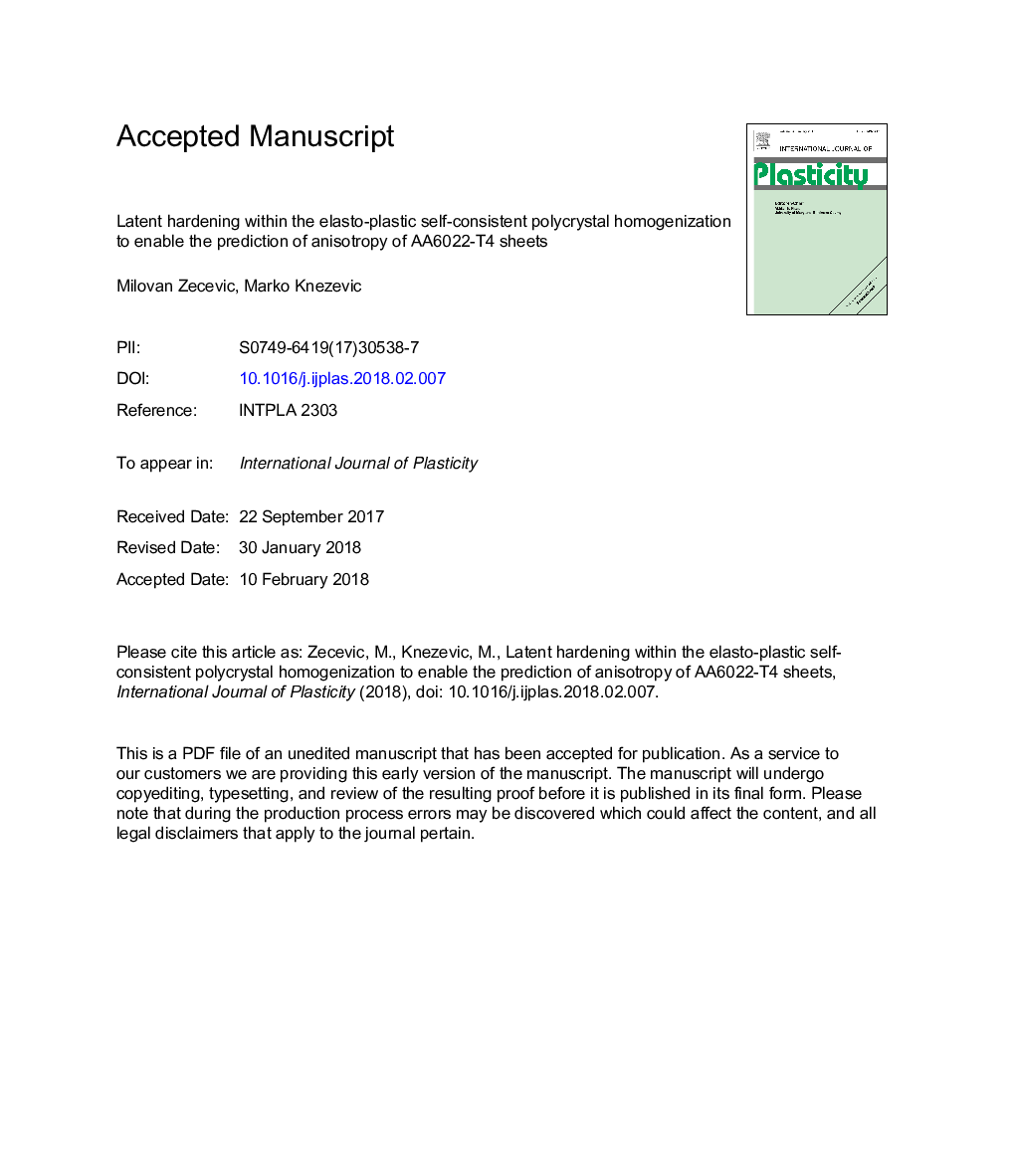| Article ID | Journal | Published Year | Pages | File Type |
|---|---|---|---|---|
| 7174817 | International Journal of Plasticity | 2018 | 45 Pages |
Abstract
Slip system hardening behavior of a given slip system is influenced more by shearing on another slip system known, as latent hardening, than by shearing on itself, known as self-hardening. This paper extends a recently developed dislocation-based hardening law within the elasto-plastic self-consistent polycrystal plasticity model to incorporate the latent hardening effects for predicting anisotropic response of polycrystalline face-centered cubic metals. In doing so, a new approach to overcome singularities associated with the self-consistent Eshelby solution procedure is proposed. The new approach is validated using a regularized Schmid law, where the singularity in Eshelby tensor calculation is intrinsically suppressed. Moreover, the solution procedure for single crystal stress increment is advanced to be based on a methodology involving the singular value decomposition to solve for shear increments. It is found that modeling crystallographic texture evolution and latent hardening successfully captures the anisotropic behavior of polycrystalline AA6022-T4 alloy. The model is subsequently successfully applied to predict large strain cyclic deformation of the same material. The implementation and insights from these predictions are presented and discussed in this paper.
Related Topics
Physical Sciences and Engineering
Engineering
Mechanical Engineering
Authors
Milovan Zecevic, Marko Knezevic,
